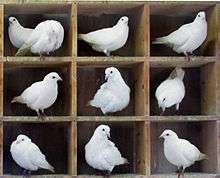Pigeonholing

Pigeonholing is any process that attempts to classify disparate entities into a small number of categories (usually, mutually exclusive ones).
The term usually carries connotations of criticism, implying that the classification scheme referred to inadequately reflects the entities being sorted, or that it is based on stereotypes.[1]
Common failings of pigeonholing schemes include:
- Categories are poorly defined (often because they are subjective).
- Entities may be suited to more than one category. Example: rhubarb is both 'poisonous' and 'edible'.
- Entities may not fit into any available category. Example: asking somebody from Washington, DC which state they live in.
- Entities may change over time, so they no longer fit the category in which they have been placed. Example: certain species of fish may change from male to female during their life.
- Attempting to discretize properties that would be better viewed as a continuum. Example: attempting to sort people into 'introverted' and 'extraverted'.
- Criteria used to categorize entities do not accurately predict the properties ascribed to those categories. Example: relying on astrological sign as a guide to someone's personality.
See also
References
- ↑ Oxford English Dictionary (Third ed.). March 2006. Retrieved 31 May 2011.
Online version March 2011. An entry for this word was first included in New English Dictionary, 1906.
This article is issued from Wikipedia - version of the 9/18/2016. The text is available under the Creative Commons Attribution/Share Alike but additional terms may apply for the media files.